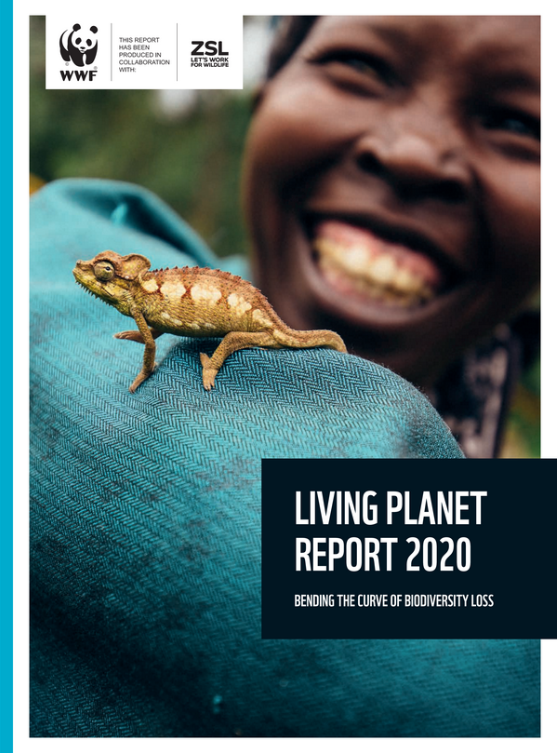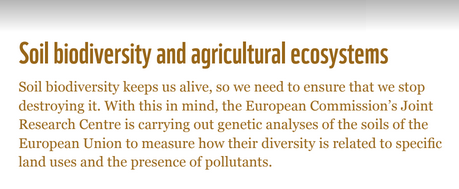
The World Wildlife Fund (WWF) Living Planet Report 2020, published today, sounds the alarm for global biodiversity, showing an average 68% decline in animal population sizes tracked over 46 years (1970-2016).
It reports that this catastrophic decline is largely due to the environmental destruction (such as deforestation, unsustainable agriculture and the illegal wildlife trade) that contributes to virus outbreaks such as COVID-19.
Tracking global wildlife trends

The thirteenth edition of WWF's biennial flagship publication gives an overview of the state of the natural world through the Living Planet Index (LPI), which tracked almost 21,000 populations of more than 4,000 vertebrate species between 1970 and 2016.
The LPI revealed a 68% average decline in global vertebrate species populations between 1970 and 2016.
Wildlife populations found in freshwater habitats fell by 84% - the starkest average population decline in any biome, equivalent to 4% per year since 1970.
The report shows that the main cause of the dramatic decline in species populations on land observed in the LPI is habitat loss and degradation, including deforestation, driven by how we as humanity produce food.
“Nature is unravelling”
The impacts of this decline directly affect nutrition, food security and the livelihoods of billions of people.
According to Marco Lambertini, Director General of WWF International,
“We can’t ignore the evidence – these serious declines in wildlife species populations are an indicator that nature is unravelling and that our planet is flashing red warning signs of systems failure.
“In the midst of a global pandemic, it is now more important than ever to take unprecedented and coordinated global action to halt and reverse the loss of biodiversity and wildlife populations across the globe by the end of the decade, and protect our future health and livelihoods. Our own survival increasingly depends on it.”
JRC contribution – Soil biodiversity

The report presents contributions from more than 125 experts from around the world, including our own JRC soil scientists Arwyn Jones and Alberto Orgiazzi.
Arwyn and Alberto report on the JRC’s research into the complexity of and threats to soil biodiversity, and the key drivers of pressures on soil organisms: climate change, land-use change, habitat fragmentation, intensive use by humans, soil organic matter decline, pollution and invasive alien species.
This is currently carried out by analysing soil samples from across the European Union as part of the Land Use and Coverage Area frame Survey (LUCAS), in order to assess soil biodiversity, the impact of specific land uses and the presence of pollutants.
Call for urgent action to reverse the trend by 2030
The report calls for urgent measures to reverse this trend by 2030 to avoid irreversible biodiversity loss.
This means stopping the destruction of natural habitats, particularly forests, and reforming our food system by making food production and trade more efficient and ecologically sustainable, reducing waste, and favouring healthier and more environmentally friendly diets.
Failing such urgent action, global biodiversity will continue to decline, populations will continue to fall and wildlife will be driven to extinction, which would threaten the ecosystems that we depend on for survival.
Post-2020 framework for action for global biodiversity
The Living Planet Report 2020 launches less than a week before the 75th session of the United Nations General Assembly, when leaders are expected to review the progress made on the Sustainable Development Goals, the Paris Agreement and the Convention on Biological Diversity (CBD).
The UNGA 2020 will bring together world leaders, businesses and civil society to develop the post-2020 framework for action for global biodiversity and thus marks a milestone moment to set the groundwork for an urgently needed New Deal for Nature and People.
Let’s hope they get it right, for all our sakes.
Further information
- WWF Living Planet Report 2020
- WWF Living Planet Report 2020 – press release
- Ten years of LUCAS soil sampling
- WWF Living Planet Report 2018: Interview with JRC experts
- How the largest European soil dataset was born
Related Content
WWF Living Planet Report 2020 – press release
Ten years of LUCAS soil sampling
Details
- Publication date
- 10 September 2020
